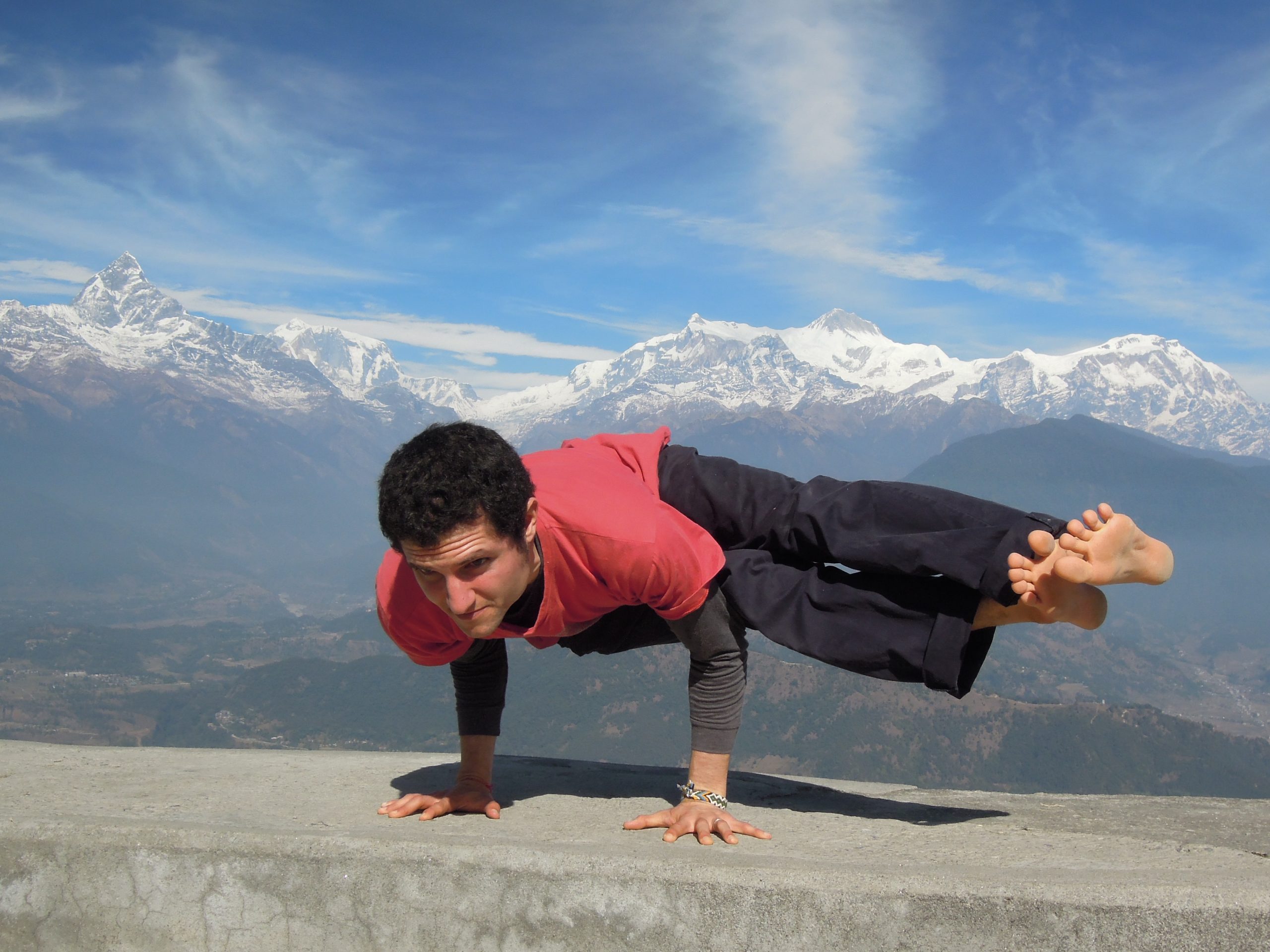PARSVABAKASANA (SIDE CROW POSE)
Parsvabakasana or Side Crow Pose is an arm balance in the Ashtanga Vinyasa Yoga Advanced Series, as well as in the Rocket 2 and Rocket 3 sequences. This posture requires considerable arm strength, as well as flexibility in the forearm muscles and the thoracic spine, to be able to twist the spine and keep the shoulders balanced as the body weight is held over the hands.
Let us discuss some tips that can help you practice this asana in a safe way…
When you do Chaturanga Dandasana, notice the position of your upper body in relation to and your arms. Slowing down your Chaturanga Dandasana will help you build up a lot of strength to work your way into Parsvabakasana. Here is are some key actions you should pay attention to when practicing your Chaturanga:
Tuck the elbows inward, and keep them close to the body
Keep the shoulders in line or slightly above the shoulders. Aim to create a 90 degree angle with your arms so that you do not collapse the body weight down.
Push the shoulders down to engage the oblique muscles
Squeeze the inner thighs together
Completing your exhale will pull the belly in, creating core activation
Keep these in mind as you review your Chaturanga Dandasana, and remember to
always be mindful of your breath’s quality. Keep practicing this until you feel that your lower plank is solid in terms of breathing and alignment; once your are comfortable here, begin to practice your Parsvabakasana using these same techniques.
Now, let’s talk more about Side Crow Pose… Firstly, for this asana, it is important to take into account that your shoulders should be balanced or in the same line. Avoid collapsing your weight onto one shoulder to avoid imbalance and injury. In order to do this, keeping the legs engaged can make a big difference. When you practice Parsvabakasana, remember to:
Keep squeezing the inner thighs together
Spread the toes
Engage the quadriceps
Actively pull the legs back into the hip sockets
While it may seem like all the body weight is carried on the arms and hands in
this posture, it is just as important to pay attention to the leg activation, as this will actually make you feel lighter on your arms and hands when you lift up. Also, these tips will give you the ability to engage the lower abdominal region and keep your pelvic floor (Mula Bandha) active.
Consistency is always key in the Yoga System, so practice and apply these tips in your daily practice, particularly in your Chaturanga Dandasana. Paying more attention to your alignment and leg activation in this seemingly basic pose will train muscles in your body to help build your strength to get into Parsvabakasana. Keep practicing!
